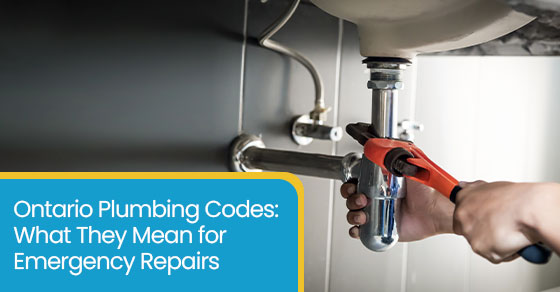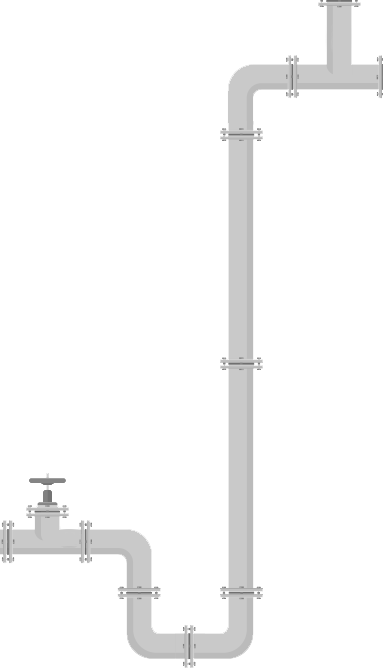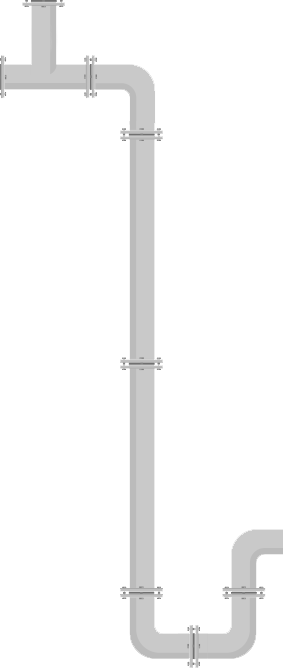Ontario Plumbing Codes: What They Mean for Emergency Repairs
Posted by Jason Genah on 19-11-2024

You may have come across the term “up to code” when people are discussing an older home. This can refer to electrical work or structural factors that need attention. Building codes were put in place to ensure that the work carried out at the time of construction was up to a certain standard. This also applies to plumbing.
The codes for plumbing are essentially designed to ensure that all the plumbing works efficiently, won’t interfere with other systems, creates a safe space, and will not fail.
These standards also apply to the distance from other installations, the size and length of the pipes, the materials used, and other considerations. However, what does this mean for emergency plumbing repairs?
Revising Building Codes
There was once a time when lead was used as a building material for every home and business, including the drinking water pipes and sewage drainage systems. When lead poisoning became a reality, the building codes were updated, and the construction materials changed.
Since then, research has developed and new materials are now being used. As time goes on, the building codes continue to be updated and revised to consider new materials and techniques.
Understanding the Building Code
The core of the building code dictates everything that plumbers need to adhere to when making any repairs or modifications, and includes the following factors:
- Plumbing fixtures should not be placed on top of one another or installed too closely to each other.
- You must determine the correct piping materials. Most inspectors accept copper piping for supply lines, while drain lines should be constructed with PVC (polyvinyl chloride). Any lead pipes need to be removed and replaced immediately.
- You must determine the correct sizing for supply lines, drains, and vents.
- For correct water pressure, you should replace an existing globe shutoff valve with a gate valve or full-bore ball.
- When installing plumbing, you must never weaken the internal structure of the house. Other requirements include placing protective covers over some pipes, as well as caulking around the pipes.
- Water hammer arresters may be needed for certain appliances. Supply lines sometimes need to be cushioned when they run through or near a framing member.
These codes also state that inspectors must have easy access to all lines and junctions, and any new plumbing done within the residence must be indicated by the use of a purple primer.
Different Requirements
The building code does not just refer to the pipes that carry the water throughout the residence and into the main sewer system. It also refers to the appliances within the residence, including things like the hot water system or the pressure required for showers and washing machines.
There is no one code to suit all circumstances. Different appliances require different codes to allow them to function correctly.
Hot water tanks, for example, require a vacuum breaker. Also, the water pressure in the pipes cannot exceed 80 PSI unless a backflow prevention system is installed.
The code also dictates the requirements for lighting and ventilation in the space where plumbing fixtures are installed, as well as the needs for any plumbing that is at risk of exposure to corrosive soil or water.
Additionally, the plumbing codes even indicate the required tools and parts for the correct and safe installation of vents, traps, and various appliances.
Specifically, this applies to washers, bolts, screws, and floor flanges, as well as things like tapes, primer, and solder types. This is all designed for the benefit of your health and safety, and to ensure that the plumbing will stand the test of time.
Common Violations
Unfortunately, even with the code in place, there are some common violations that will cause issues for the homeowner. This is one reason that an inspection is recommended when you are in the process of purchasing a new home, or before you move in.
These issues can include improper drain pipe slope, which can lead to sewage backing up into the home, and inadequate space around the toilet. In fact, there are parameters that must be adhered to when installing a toilet. This is for safety and maintenance reasons.
Other problems include poor ventilation, inaccessible spaces, and non-functioning or unserviceable valves and shutoffs. Inadequate or damaged water heater pressure valves and temperature relief valves are also common issues, and can lead to physical harm if they were to break and someone was close by.
These issues are all easily corrected and avoided with the correct installation and adherence to the code.
Contact the Professional Emergency Plumbers in Toronto
If your pipes need to be replaced, then a qualified emergency plumber in Toronto will know what materials need to be used. They are also informed about the required distances from other fixtures and new venting needs.
The plumbing codes are designed to keep the tradesperson updated with all the new requirements and developments to prevent future issues and conform to the regulations. This is not just for the safety of the structure, but also for the residents’ health and security.
At Drain King Plumbers, we understand and adhere to all the codes and regulations regarding plumbing installation. We perform regular reviews to stay up to date and ensure that all repairs, emergency or otherwise, are done properly to prevent further issues for you, the homeowner.
For more information on our emergency plumbers in Toronto, you can call us at 833-983-5663 or go online today.




